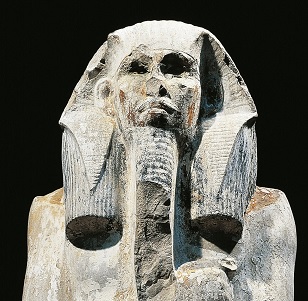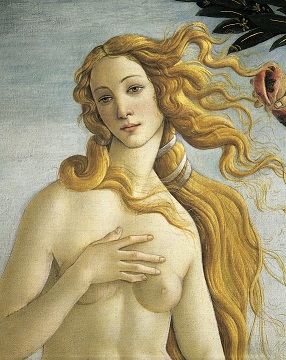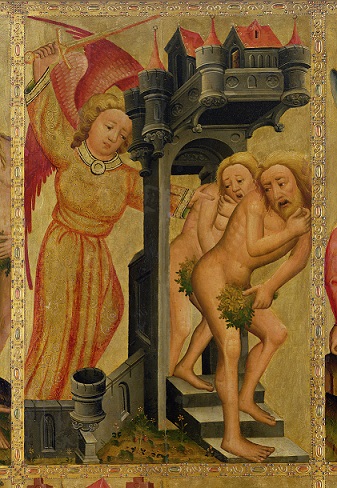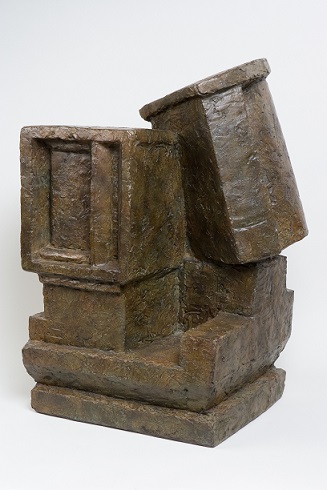This is an English translation of a brief introduction to my book Art and Time prepared for a conference on Malraux in Paris in May 2013.
Version
française
en dessous.
The conference organisers have kindly
asked me to say a few words about my recent book Art
and Time. Rather than speak about the book itself, I
thought I would comment very briefly on the subject it addresses – the
question, so frequently ignored in contemporary aesthetics, of the
relationship
between art and time.
André
Malraux wrote in 1935 that “as well
as being an object a work of art is also an encounter with time”. An
anodyne
comment at first sight, perhaps, but in reality one of crucial
importance. What
exactly does Malraux mean?
Malraux
is not referring to the function
of time within works of art – for
example, the ways in which the passing of time might be represented in
film or
the novel. His subject is something quite different – the external relation between art and time,
that is, the
capacity of works of art to defy the passage of time, their capacity to
survive
across the centuries and millennia – their specific and unique capacity
to transcend time.
Examples
are abundant. The tragedies of Racine
and Corneille are still alive and immediate for us while hundreds of
other plays
written in the seventeenth century are dead and forgotten. Mozart’s
music
speaks to us as if it were composed yesterday while Salieri's seems
covered in a
thick layer of eighteenth-century dust. And while we are very happy to
welcome
the Victory of Samothrace into our
world of art, a simple potsherd of the same epoch would surely be out
of place there.
So
we find ourselves confronted with a
mysterious state of affairs. There seem to be certain human creations
capable
of defying the passage of time – of resisting the unremitting waves of
change
and forgetfulness that engulf all other products of human activity. It
is in
this sense precisely that Malraux says that a work of art is not only
an object
but also “an encounter with time,” because in the work of art we
encounter an
object that possesses a unique power to overcome time – a power to
resist the
ineluctable forces that lead to indifference and oblivion.
Now
in one sense nothing I’m saying here
is new. We are not the first to realize that art possesses a
unique
power to defy time. The Renaissance was intensely conscious of this
power, and poets,
in particular, celebrated it again and again (Shakespeare’s sonnets are
an
obvious example). Moreover,
Renaissance thinkers
went one step further: they also proposed an explanation of the way in which art defies time. Art, the
Renaissance
said, (and the theme is prominent in the poetry of the period)
vanquishes time
because it is “eternal”, “immortal” – entirely unaffected by the
consequences of
the passing of time. Art, in other words, inhabits a world untroubled
by the
passing of time – a world proof against the ephemerality characteristic
of our weak and
vulnerable human lives. Seen in this light, art vanquishes time because
it is
“timeless” – literally outside time.
This
idea was extremely
influential over
the centuries that followed. It underpinned the new discipline
of aesthetics
that emerged in the eighteenth century and still plays a large, if
seldom recognised,
role in the contemporary philosophy of art which, as we know, derives
its key
ideas from Enlightenment thought. And even today
it's not hard to detect the same
idea in our everyday thinking – for example, when
someone describes
an appealing melody as “immortal”, or the publicity blurb for
a novel
tells
us that it addresses “eternal themes”.
But
there’s the rub. Do we today honestly still
believe that art defies time because it is eternal or immortal? As I
argued a
moment ago, we can hardly deny that art does possess a unique capacity
to defy
time; but are we still convinced that it does so because it is
invulnerable to
the consequences of the passing of time – that it is timeless or
eternal? The proposition
strikes us as outdated, does it not – like a remnant from a previous
era? The
poets of the Renaissance and the thinkers of the Enlightenment seem to
have had
no difficulty in accepting the idea, but the world – and especially
the world
of art – has changed enormously since then, and if we are searching for
ideas to
explain the world as we now know
it,
can we continue to accept the claim that art is eternal or immortal?
Malraux,
for his part, does not accept it at all. He willingly accepts that art
possesses
a unique power to defy time – and indeed this is a key theme
in the theory
of art expounded in The Voices of Silence and The
Metamorphosis of
the Gods – but he unambiguously rejects the traditional idea
that art transcends
time because it is eternal – that is to say,
unaffected by the passage
of time. Art defies time, Malraux
argues, through a
process of metamorphosis – a
process in
which time plays an essential role, a process in which works such as
the
sculptures on Chartres Cathedral, created at a time in history when the
idea of
art did not exist, can become "works of art" in a culture such as our
own in
which the religious beliefs of the Chartres sculptors have ceased to be
comprehensible.
I do not want, today, to offer a more detailed explanation of Malraux’s idea of metamorphosis. I’ve said almost all I want to say in my two books – especially in Art and Time. I would, however, like to finish with a brief comment on the importance of the idea.
There
are certain commentators who tend to read
Malraux
a little too quickly and claim that his idea of metamorphosis
is in
large measure borrowed from other writers and is not really original.
Nothing
could be further from the truth. The word
“metamorphosis” has, of course, been used by many other writers;
Malraux has no
monopoly on it, or on the general notion of transformation
that it usually signifies.
But in Malraux’s case the idea of metamorphosis takes on a
wholly new
dimension. One is no longer dealing simply with the notion of
transformation. One
is dealing with an entirely new explanation of the relationship between
art and
time – a recognition that the process by
which art
defies time is a process of metamorphosis. This
proposition Malraux borrows
from no one, and one will search in vain to find other authors who use
the word
or the idea in this sense.
It is
difficult to exaggerate the importance of Malraux’s proposition – or
rather his discovery. In an English academic journal I
described
it as “an
intellectual revolution” and I chose those words very deliberately.
This
revolution, I’m well aware, is far from being fully recognised and
understood because contemporary philosophers of art in Anglophone
environments,
as in France, pay very little attention to the temporal dimension of
art. To
borrow Malraux’s words, contemporary philosophers of art seem to
have
forgotten that as well as being an object, art is also an encounter
with time. But this
is to forget one of art's fundamental features, indeed, perhaps
its
most extraordinary – one might even say miraculous – features. Malraux
reminds
us of the crucial the importance of this aspect of art. Art, he
stresses, has a
unique capacity to transcend time. It is, in his words, “the presence in
life of what should belong to death”. But it overcomes time not because it is
eternal
– timeless – but through an endless process of
metamorphosis.
On m’a aimablement invité à vous
dire quelques
mots au sujet de mon livre sorti récemment et portant le titre Art and Time, littéralement
« L’Art
et le temps ». Mais
plutôt que de
parler de mon livre lui-même, j’aimerais évoquer très brièvement la
question
centrale que j’essaie d’examiner dans ces pages – la question trop
souvent
oubliée de la relation entre l’œuvre d’art et le temps.
Il y a quelques
critiques qui ont une tendance à lire Malraux un peu trop vite, et qui
concluent
que son idée de la métamorphose est largement empruntée à d’autres
penseurs et
qu’elle n’est guère originale. Erreur capitale ! Le mot métamorphose a, bien sûr, été
utilisé
assez souvent par d’autres auteurs. Malraux n’a pas de monopole du
vocable, ni de
l’idée générale de transformation qu’il signifie. Mais chez Malraux
l’idée de
la métamorphose prend une dimension tout à fait neuve :
l’enjeu n’est plus
simplement l’idée d’une transformation ; c’est bel et bien une
nouvelle
explication de la relation entre l’art et le temps – une reconnaissance
que le
processus par lequel l’art défie le temps est précisément un processus
de
métamorphose. Cela
Malraux ne l’emprunte
nulle part, et on chercherait en vain d’autres auteurs qui auraient
utilisé le
mot ou l’idée dans ce sens-là.
Il
est difficile d’exagérer l’importance de cette
proposition – ou plutôt de cette découverte. Dans un article d’une
revue
anglaise, je l’ai appelé « une révolution
intellectuelle » et
j’ai
choisi ces mots très délibérément. La révolution en question, j’en suis
très conscient,
n’a pas encore été pleinement reconnue parce que la philosophie contemporaine
de
l’art dans les pays anglo-saxons, comme en France, prête très peu
d’attention
à la
dimension temporelle de l’art. Pour reprendre les mots de Malraux, la
philosophie contemporaine
de
l’art semble avoir oublié que l’art n’est
pas
uniquement un objet mais aussi une rencontre avec le temps. Mais c’est
oublier une des caractéristiques fondamentales de l’art – voire sa
caractéristique la
plus extraordinaire, pour ne pas dire miraculeuse. Malraux souligne
l’importance capitale de cet aspect de l’art. L’art, maintient-il,
possède une capacité
unique de transcender le temps. C’est, écrit-il « la présence,
dans la
vie, de ce qui devrait appartenir à la mort ». Mais l’art ne
vainc
pas le
temps parce qu’il est éternel - « timeless » - mais par un processus, sans fin,
de
métamorphose.







